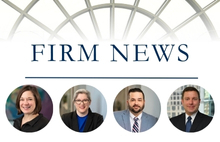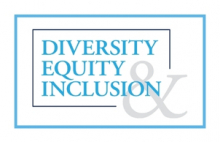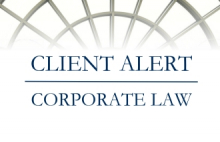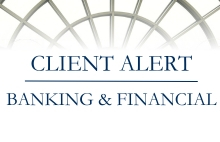IRS Releases Additional Guidance on Opportunity Zone Investments
June 2019On April 17, 2019, the Internal Revenue Service (IRS) released its long-awaited second set of proposed regulations (REG-120186-18) addressing qualified opportunity funds (“QO Funds”). QO Funds were created to provide capital for investment, development, and redevelopment in low-income communities designated as qualified opportunity zones (“QO Zones”). Potential investors and sponsors have thus far been reluctant to invest in QO Funds, mostly due to uncertainty regarding several aspects of QO Funds. In clarifying many of the most important aspects, the new proposed regulations tend to take a taxpayer-favorable approach and appear intended to facilitate investments in QO Funds.
The Opportunity Zone Program
Congress created the QO Zone program in 2017 as part of the Tax Cuts and Jobs Act. To encourage new capital investment in QO Zones, the program provides federal tax incentives to investors in QO Funds. Investors who make a “Qualifying Investment” of realized capital gain into a QO Fund can obtain three major tax benefits:
- They may defer recognition of capital gains until the earlier of (i) the date on which the interest in the QO Fund is sold, or (ii) December 31, 2026, by investing in a QO Fund an amount equal to the capital gain within 180 days (the “Deferred Gain”).
- They may permanently exclude 10% of the Deferred Gain by holding the investment in the QO Fund for five years, and they may permanently exclude 15% of the Deferred Gain by holding the investment in the QO Fund for seven years.
- They may permanently exclude gain on the sale of a Qualifying Investment in a QO Fund that has been held for at least 10 years (the “Permanent Exclusion”).
In late 2018, the IRS released the first set of proposed regulations on QO Funds (REG-115420-18) and Rev. Rul. 2018-29, which clarified several issues regarding QO Funds. For background on the QO Zone program and this initial IRS guidance, please see our prior alert.
The issues addressed in the new proposed regulations include the following:
- Clarification of the types of investment in QO Funds that would be eligible for the tax benefits outlined above, and the treatment of taxpayers who acquire both Qualifying Investments and Non-Qualifying Investments.
- Rules on the extent to which transactions such as equity and asset sales, distributions, debt-financed distributions, reorganizations, spin-offs, gifts, bequests, and transfers to trusts would trigger the early recognition of Deferred Gain.
- Guidance permitting asset sales by a QO Fund to qualify for the Permanent Exclusion and providing qualification criteria.
- Liberalization and clarification of several of the qualification requirements for QO Funds, including
- the requirement that QO Funds must hold 90% of their assets in QO Zone Property;
- the working capital safe harbor;
- the original-use requirement for QO Zone Property; and
- the measurement of the use of property within a QO Zone, including rules for leased property and inventory in transit.
- The provision of three safe harbors that may be relied upon in satisfying the requirement that a QO Fund must derive at least 50% of its total gross income from the active conduct of a trade or business within a QO Zone.
In addition, the proposed regulations contain specific rules applicable to a QO Fund structured as a C Corporation, an S corporation, or a partnership, as well as tiered structures and QO Fund affiliated groups. The proposed regulations also address various reporting requirements and obligations. Several of the most important clarifications are explained below.
Gains Eligible for Deferral
Only capital gain is eligible for deferral through an investment in a QO Fund. Although it has always been clear that both long-term and short-term capital gains from the sale or exchange of a capital asset under Internal Revenue Code (the "Code") Sections 1221–1222 satisfy this requirement, the proposed regulations clarify that a gain from Code Section 1231 assets would be eligible for deferral through an investment in a QO Fund only to the extent of the taxpayer's capital gain net income from such assets. Thus, it would not be sufficient that a taxpayer has a gain from a Code Section 1231 asset during the year. The taxpayer would need to first net all of his or her Code Section 1231 gains and losses for the year in order to determine whether there is capital gain net income (that is, an overall net gain) from Code Section 1231 assets. Because this determination could not be made until the end of the taxable year, taxpayers would have 180 days from the last day of the taxable year to defer recognition of Code Section 1231 net capital gain by investing in a QO Fund.
In addition, gain from the sale of property in exchange for an eligible interest in a QO Fund or from the contribution of appreciated property to a QO Fund would not be eligible for deferral. For example, gain recognized on a disguised sale of property to a QO Fund under Code Section 707 would not be eligible.
Eligible Investments
The specific proceeds from the sale that generated the Deferred Gain do not need to be invested in the QO Fund. Taxpayers could invest in a QO Fund by contributing money or property, but not services, in exchange for an “eligible interest” in a QO Fund (that is, an interest that will qualify for the election to defer gain as outlined above). If a taxpayer makes a contribution in exchange for an eligible interest and elects to defer recognition of gain, the interest would be a “Qualifying Investment.” A contribution to a QO Fund that is not made in exchange for an eligible interest or for which no deferral election is made would be a “Non-Qualifying Investment.”
The proposed regulations also address the amount of the taxpayer’s investment where the taxpayer receives both a Qualifying Investment and a Non-Qualifying Investment in a QO Fund (a “Mixed-Fund Investment”). For most purposes under the Code, the Mixed-Fund Investment will be treated as a single unified interest (for example, for capital account and basis purposes), but for purposes of the QO Fund rules, the Mixed-Fund Investment would be treated as two interests. One consequence of this is that, in the case of a QO Fund organized as a partnership, all partnership items, such as income, debt allocations, and property distributions, would be allocated between Qualifying Investments and Non-Qualifying Investments according to these interests' respective “allocation percentages.” Allocation percentages would generally be based on relative capital contributions for Qualifying Investments and Non-Qualifying Investments. The proposed regulations provide special rules applicable to QO Funds treated as partnerships and as S corporations.
The benefits of contributing appreciated property to a QO Fund may be questionable. The property would not be treated as QO Zone Property for purposes of QO Fund qualification. Thus, the QO Fund would either have to sell the property and recognize gain, or have sufficient other qualifying assets. If a QO Fund is organized as a partnership, all of the gain from sale of the property would be allocated to the contributing partner under Code Section 704(c).
The proposed regulations also clarify that a taxpayer could invest in a QO Fund by purchasing a direct interest from a direct owner of an eligible interest in the QO Fund. The taxpayer would be treated as making an investment in an amount equal to the amount paid for the eligible interest.
Events Causing Inclusion of Deferred Gain
The new regulations also provide guidance on what events may cause a taxpayer to recognize previously Deferred Gain that was invested in a QO Fund. In general, the regulations provide that an inclusion event would result from a transfer of a Qualifying Investment in a QO Fund to the extent that the transfer reduces the taxpayer’s equity interest in the QO Fund. Some of the inclusion events in the regulations are:
- A sale of a QO Fund interest;
- Certain transfers of a partnership interest in a partnership that owns a QO Fund;
- A gift of a QO Fund interest; and
- Certain distributions to the investor by the QO Fund.
Detailed rules regarding asset sales, reorganizations, spin-offs, transfers on death, transfers to trusts, and other transfers or dispositions are also addressed by the proposed regulations and would need to be taken into account in planning exit strategies both by investors and by QO Funds. In many cases, different rules apply (for example, with respect to distributions) depending on whether the QO Fund is organized as a C corporation, an S corporation, or a partnership.
When an inclusion event occurs, the amount a taxpayer must recognize as income would depend on whether the QO Fund is treated as a partnership for tax purposes. If the QO Fund is not a partnership, an investor would generally recognize income equal to the excess, if any, of (1) the lesser of (a) the fair market value of the portion of the Qualifying Investment disposed by the taxpayer, and (b) the amount that bears the same ratio to the remaining Deferred Gain as the first amount bears to the total fair market value of the Qualifying Investment in the QO Fund immediately before the transaction, over (2) the investor’s basis. If the QO Fund is a tax partnership, the investor would recognize an amount equal to the percentage of the QO Fund interest transferred, multiplied by the lesser of the following: (a) the remaining Deferred Gain less any basis adjustments for five- and seven-year holding periods, or (b) the gain that would be recognized by the investor if the interest were sold in a fully taxable transaction for its then fair market value.
Ability of QO Funds to Make Debt-Financed Distributions
The new proposed regulations would allow for debt-financed distributions to partners in a QO Fund treated as a partnership. Such a QO Fund could therefore borrow money and distribute it to its partners on a tax-free basis without triggering the recognition of Deferred Gain, so long as the amount of the distribution does not exceed the partner’s basis in the QO Fund. Because a partner’s basis in the QO Fund generally will include that partner’s share of the liabilities of the QO Fund, structuring tax-free debt-financed distributions should seldom pose an issue.
An Asset Sale as a Viable Exit Strategy for QO Funds
Prior to the issuance of the new proposed regulations, it was unclear whether the Permanent Exclusion for gains after the taxpayer held an investment for at least 10 years applied only to a sale of the taxpayer’s interest in the QO Fund or also to sales of assets by the QO Fund. This uncertainty hindered planning for exit from a QO Fund, particularly if the QO Fund intended to make multiple investments. The new proposed regulations would provide that if a taxpayer has held a Qualified Investment in a QO Fund treated as a partnership or an S corporation for at least 10 years, and the QO Fund sells QO Zone Property after such 10-year period, the taxpayer could elect to exclude the capital gain arising from the sale of the asset.
An aspect of the proposed regulations that does not favor taxpayers is that income and gain on the sale of assets during the 10-year holding period would still need to be recognized (by the QO Fund if it is a C corporation or by the investors if it is an S corporation or partnership) even if the proceeds are reinvested in QO Zone Property by the QO Fund. The IRS believes that it lacks the authority to provide for nonrecognition treatment in such circumstances, but is willing to consider taxpayer comments on this issue.
Reinvestment Rule on the Sale of a QO Fund’s Assets
QO Funds must hold 90% of their assets in QO Zone Property, as measured every six months (the “90% Test”). Proceeds received by the QO Fund from the sale or disposition of QO Zone Property would be treated as QO Zone Property for purposes of the 90% Test, so long as the QO Fund reinvests the proceeds within 12 months. The sales proceeds would need to be continuously held in cash, cash equivalents, and debt instruments with a term of 18 months or less. A QO Fund would be allowed to reinvest proceeds from the sale of one type of QO Zone Property into another type of QO Zone Property. The proposed regulations would also provide relief from application of the 90% Test if the failure to meet the 12-month deadline is attributable to delay in government action, such as a rezoning.
Relaxed Requirements for the 90% Test that Should Enable QO Funds to Conduct Additional Fundraising Rounds
QO Funds need to satisfy the 90% Test every six months or face a penalty. Generally, the 90% Test is measured on June 30 and again on December 31. The 90% Test would not take into account cash, cash equivalents, and debt instruments with a term of 18 months or less that are invested in the QO Fund within the six-month period prior to a testing date. This would enable QO Funds to accept cash from new investors shortly before a testing date without causing the QO Fund to fail the 90% Test.
Expansion of the Working Capital Safe Harbor
The first set of proposed regulations implemented a working capital safe harbor for purposes of the 90% Test. The safe harbor allows business to hold cash for up to 31 months if (i) there is a written plan for the use of the cash for the acquisition, construction, or substantial improvement of tangible property in the QO Zone, (ii) the cash will be spent within 31 months, and (iii) the business substantially complies with the plan. Critics noted that the safe harbor was difficult to satisfy if the QO Fund was planning on establishing a new business rather than developing property. The new proposed regulations address this criticism by allowing businesses to hold cash to develop a trade or business in the QO Zone as well as for the acquisition, construction, or substantial improvement of tangible property. They also provide that a QO Fund that exceeds the 31-month period would not violate the safe harbor if the delay is attributable to waiting for a government action on an application that is submitted during the 31-month period.
This expansion of the safe harbor is beneficial to companies seeking to raise funds in multiple rounds, so long as a plan to use the funds is in place and substantially followed. Each new round of financing should get a new 31-month window for the new capital to be deployed, so long as each round of financing independently satisfies the three working capital safe harbor requirements.
Five Years of Vacancy Considered as Satisfying the Original Use Test
QO Zone Business Property must either have its “original use” commence with the QO Fund or be substantially improved by the QO Fund. Under Rev. Rul. 2018-29, land and improvements to the land are treated separately. The ruling indicates that the purchase of an existing building in a QO Zone does not satisfy the original use requirement. However, the proposed regulations provide that where a building or other structure has been vacant for at least five years prior to being purchased by a QO Fund or QO Zone Business, the purchased building or structure would still satisfy the original use requirement.
The proposed regulations further clarify that unimproved land that is within a QO Zone and acquired by purchase would not be required to be substantially improved if it is used in a trade or business of the QO Fund or the QO Zone Business.
Safe Harbors for Measuring 50% of Income from Active Trade or Business for a QO Zone Business
A QO Zone Business must derive at least 50% of its total gross income from the active conduct of a trade or business within a QO Zone. Commentators raised concerns about how to determine whether this requirement is met. The proposed regulations therefore provide three safe harbors for determining whether sufficient income is derived from a trade or business in a QO Zone:
- At least 50% of the services performed (based on hours) for the business by its employees and independent contractors (and employees of independent contractors) are performed in the QO Zone;
- At least 50% of the services performed (based on the cost of services performed) for the business by its employees and independent contractors (and employees of independent contractors) are performed in the QO Zone; or
- The tangible property of the business that is in a QO Zone and the management or operational functions performed for the business in the QO Zone are both necessary to generate 50% of the gross income of the trade or business.
If a business does not qualify under any of these safe harbors, a facts and circumstances test would allow a QO Zone Business to otherwise attempt to show that 50% of its gross income is derived from the active conduct of a trade or business in a QO Zone.
Officials of the U.S. Department of the Treasury have indicated that no further proposed regulations are anticipated.
If you have any questions regarding Opportunity Zones or the impact of the proposed regulations, please contact one of our tax or real estate attorneys.








